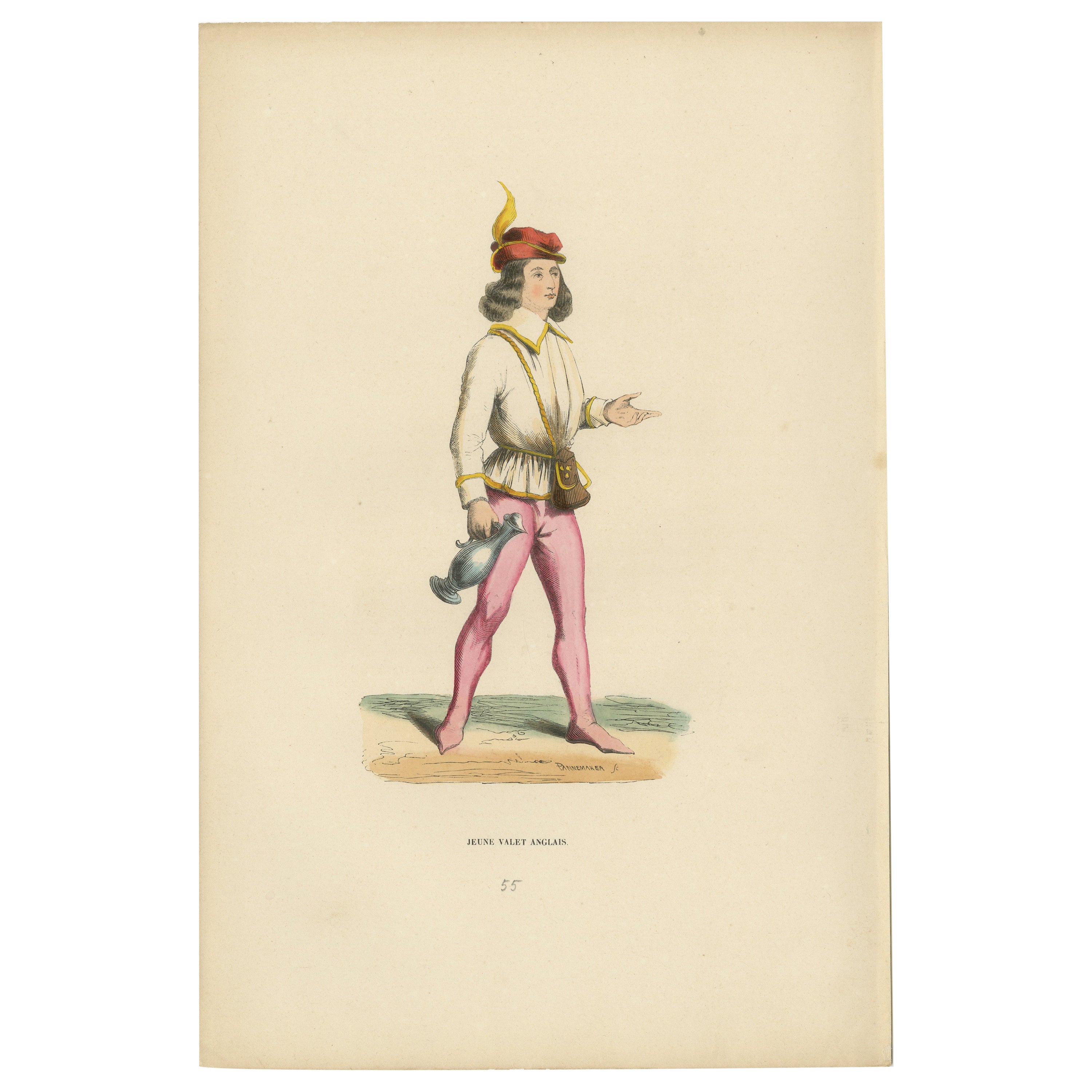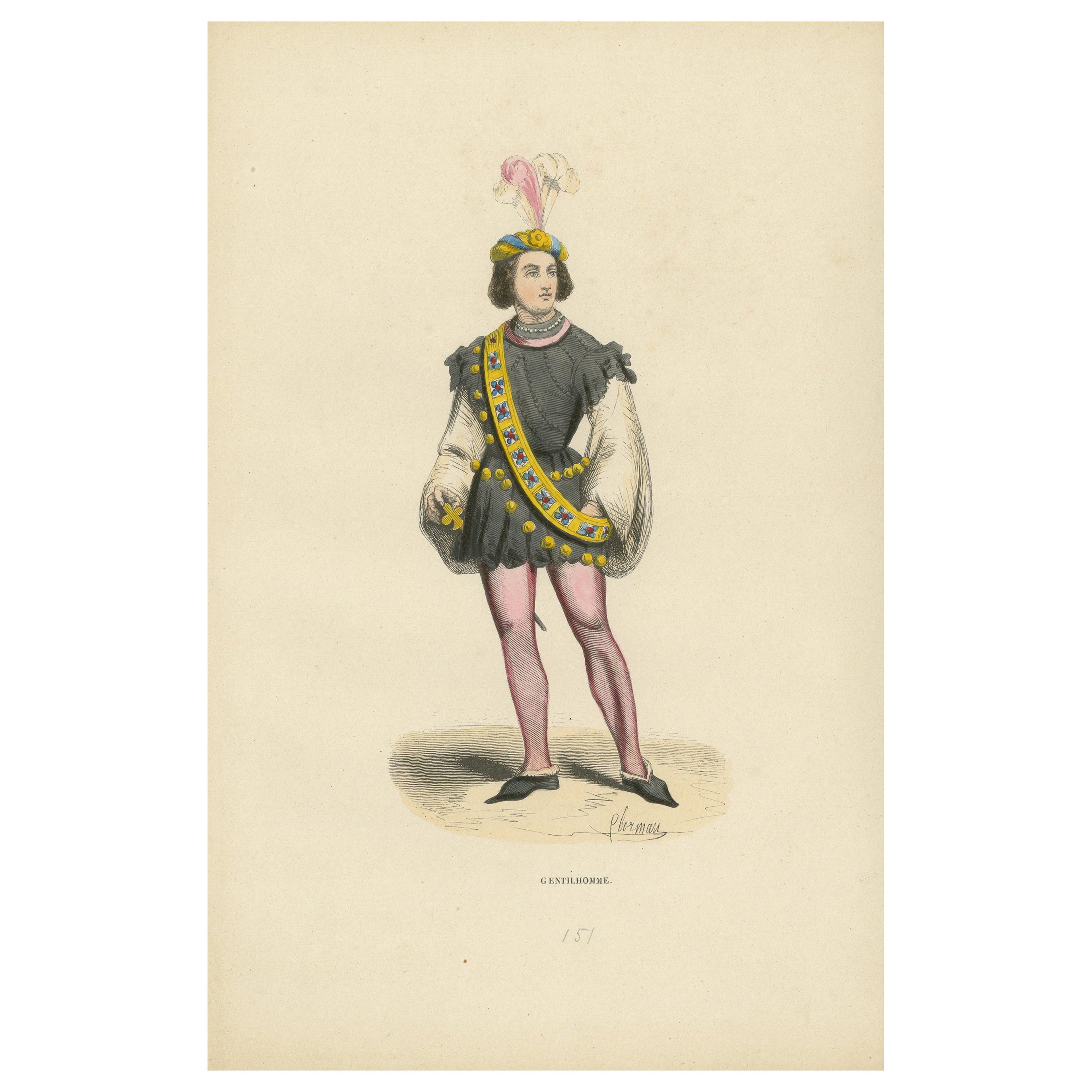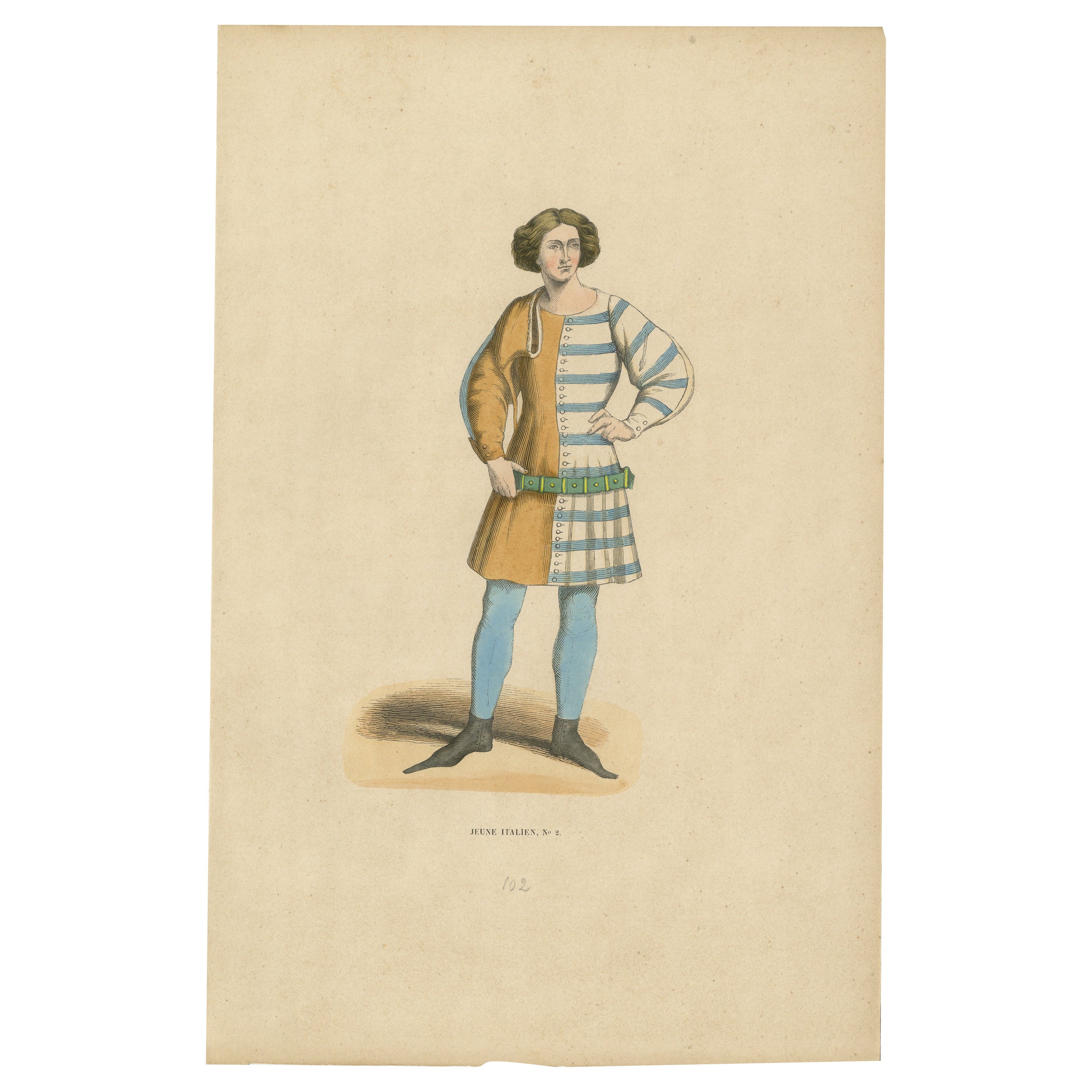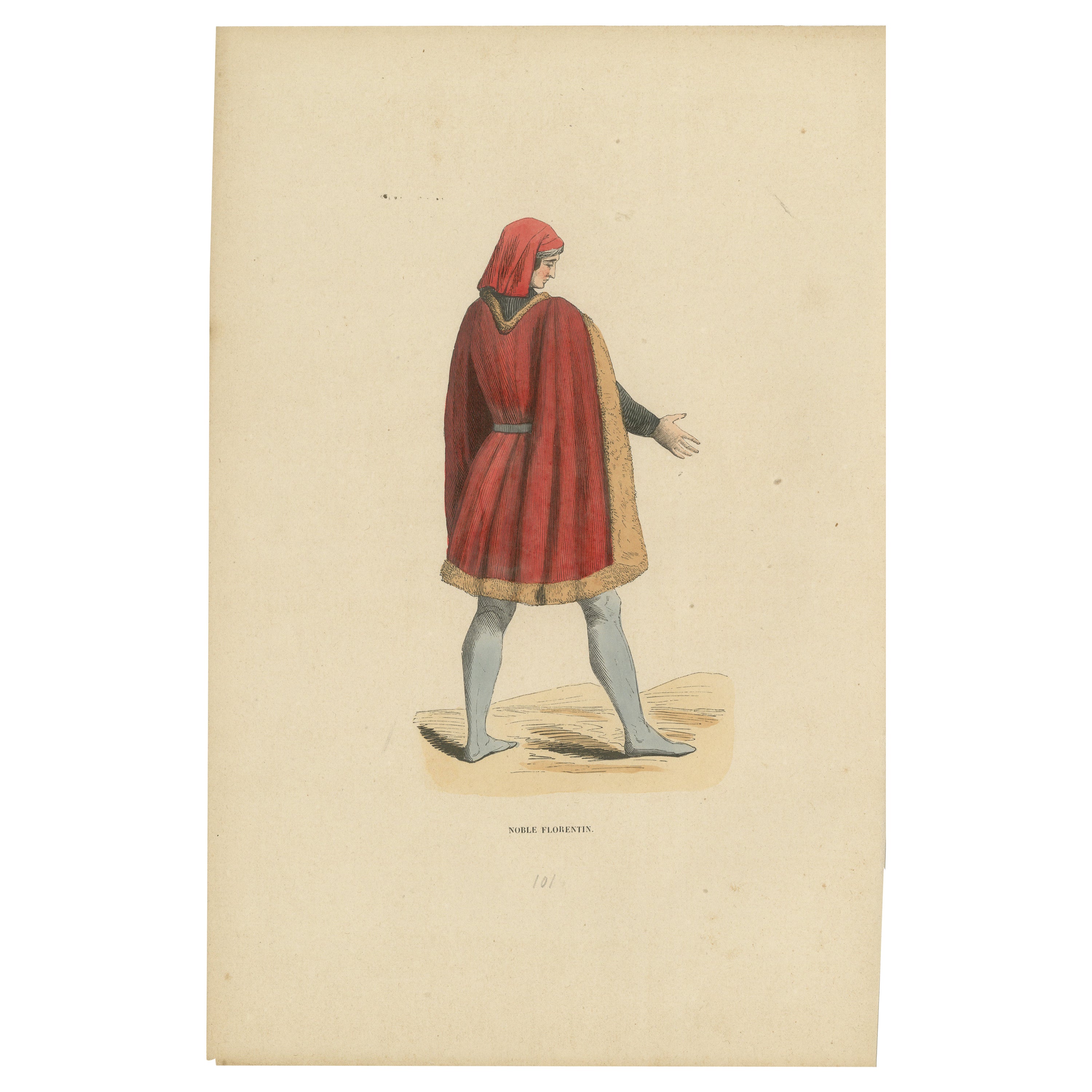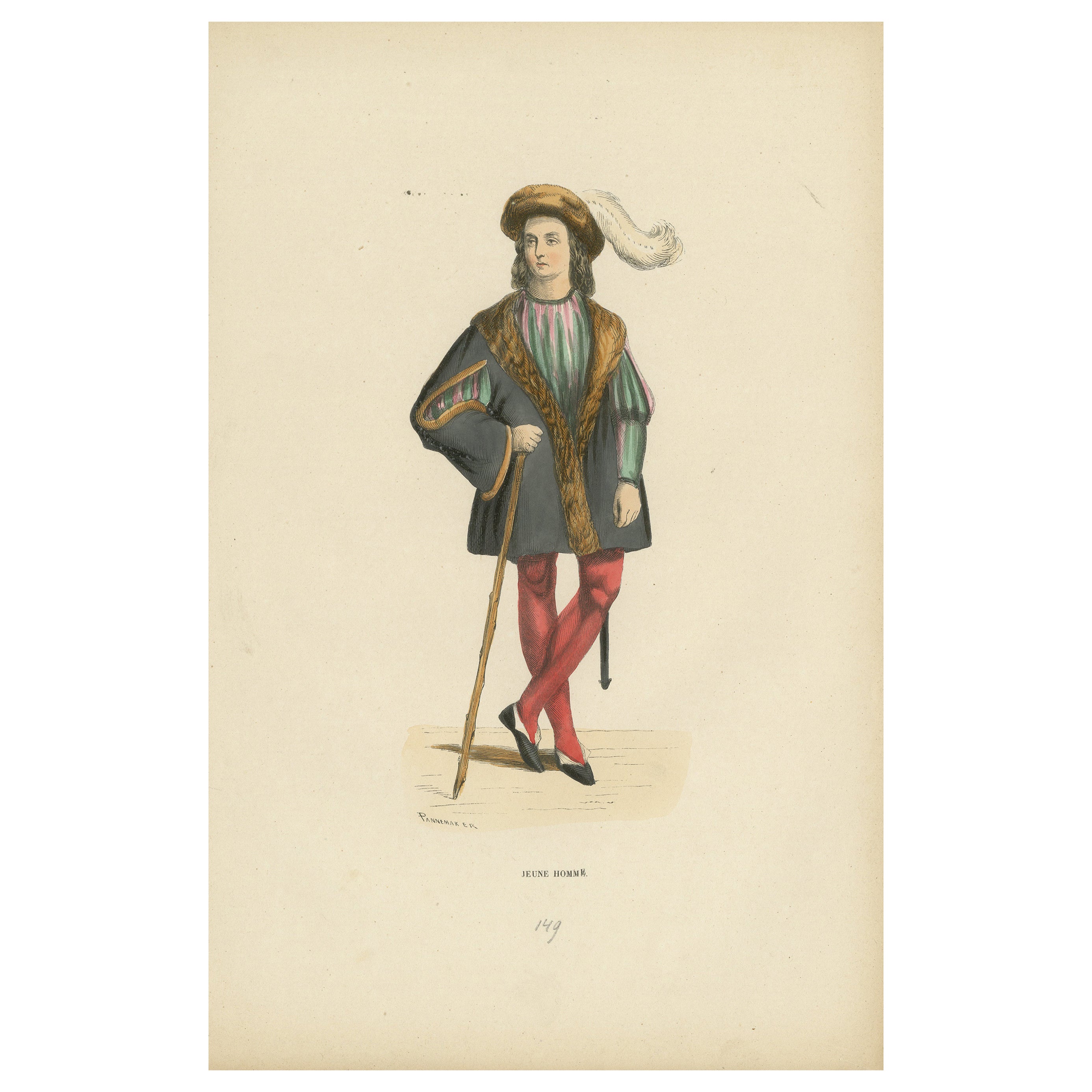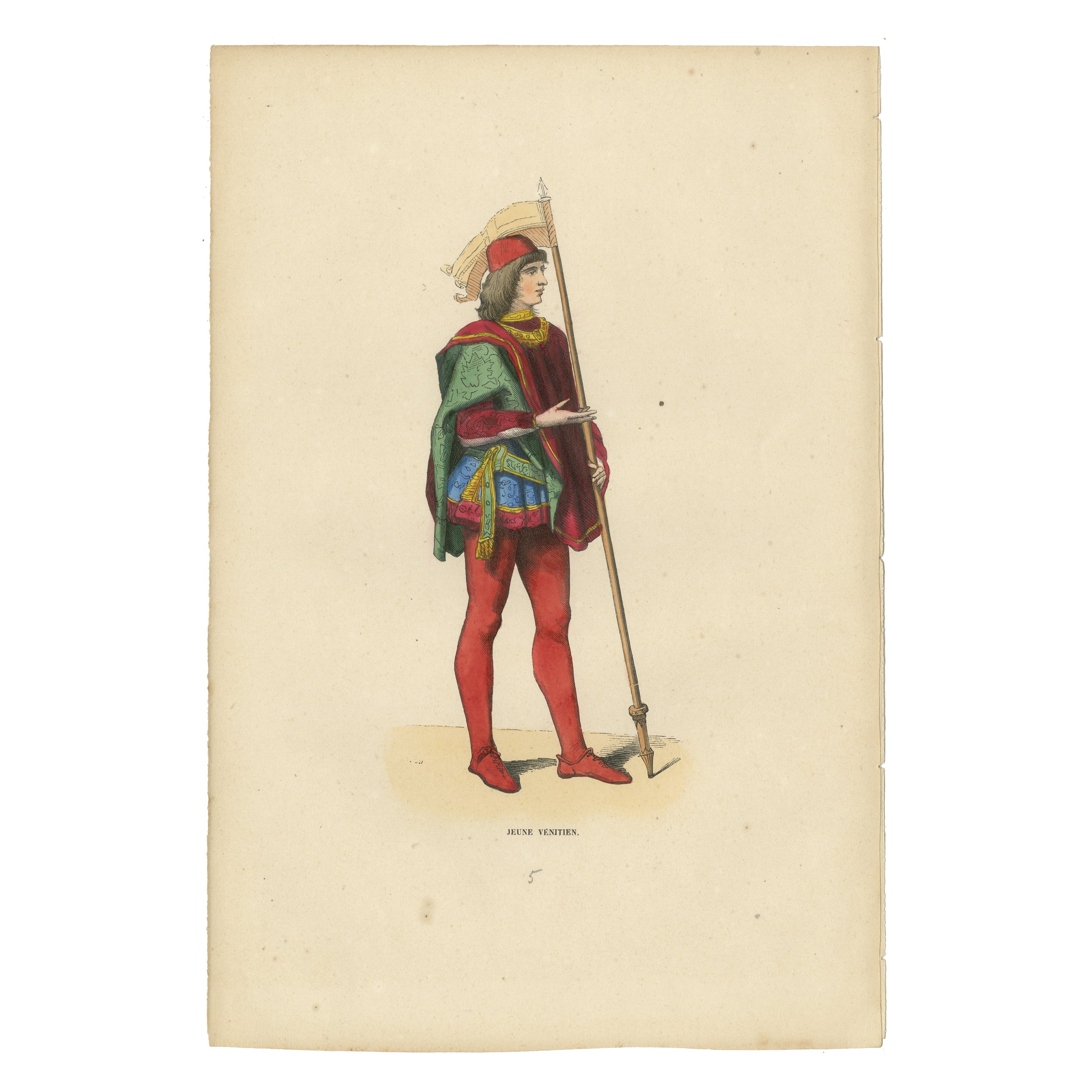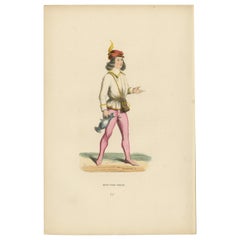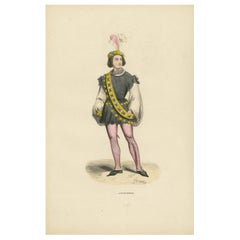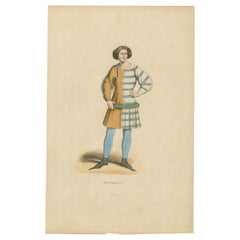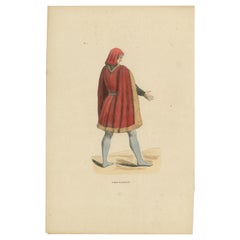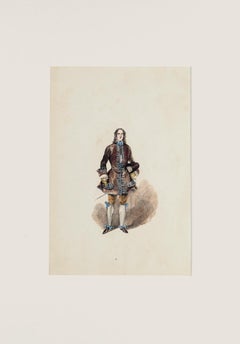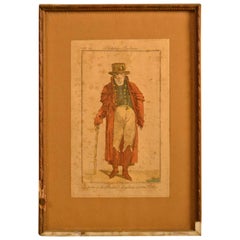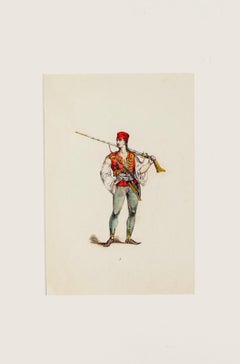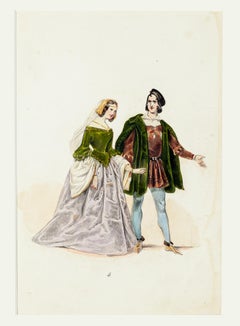Items Similar to Stylish Swagger: A Young English Gentleman in The Middle Ages, Published in 1847
Want more images or videos?
Request additional images or videos from the seller
1 of 6
Stylish Swagger: A Young English Gentleman in The Middle Ages, Published in 1847
$153.27
$191.5820% Off
£113.30
£141.6220% Off
€128
€16020% Off
CA$208.45
CA$260.5720% Off
A$233.57
A$291.9620% Off
CHF 121.58
CHF 151.9820% Off
MX$2,857.38
MX$3,571.7320% Off
NOK 1,543.27
NOK 1,929.0820% Off
SEK 1,457.60
SEK 1,821.9920% Off
DKK 974.66
DKK 1,218.3220% Off
Shipping
Retrieving quote...The 1stDibs Promise:
Authenticity Guarantee,
Money-Back Guarantee,
24-Hour Cancellation
About the Item
Title: "Stylish Swagger: A Young English Gentleman in 'Costume du Moyen Âge'"
Description: This lithograph from the 1847 publication "Costume du Moyen Âge" captures the confident stance of a young English gentleman. The figure is dressed in the fashion of the time, characterized by a rich brown doublet with a low-cut neckline, allowing the white pleated shirt beneath to peek through. The doublet's sleeves taper to the wrist, revealing the gentleman's slender hands, and the garment is tailored to accentuate his physique.
The young man's attire is completed with striped hose in alternating bands of pink, white, and black, tightly fitted to show the contours of his legs, a common style among the fashion-conscious youth of the nobility. His pointed black shoes are the finishing touch to his outfit, suggesting both practicality and a nod to the trends of the era.
Around his waist, he sports a golden-yellow belt with a matching pouch, both adorned with what appear to be precious stones or intricate stitching, indicating wealth and attention to detail. His head is topped with a red cap, worn at a jaunty angle, giving him an air of nonchalance and flair.
The young gentleman's expression is one of self-assured ease, with his gaze directed off to the side, as if he is in mid-conversation or surveying his surroundings. His posture, with one hand on his hip and the other extended, reinforces his attitude of casual confidence.
This image is not only a study of the clothing of a young English noble but also conveys the social demeanor and style that was expected of a gentleman during the period. The lithograph offers a glimpse into the fashion sensibilities of the English aristocracy in the Middle Ages, reflecting the cultural norms and the importance placed on appearance and attire as a reflection of status.
The colors have a nice glow over them. Historically, egg whites, known as glair, and sometimes egg yolk were indeed used in illumination and painting, particularly in manuscripts, to give colors a brighter appearance and to add a sheen or gloss to the work. This technique was quite common during the Middle Ages and into the Renaissance.
Egg whites can be applied as a varnish over pigments to enhance their brightness and to protect the colors. This application could make the colors appear more vivid and also add a slight glossy sheen to the surface of the image.
Egg yolk, on the other hand, was commonly used as a binding agent in paint. It forms the basis of tempera paint, a medium that was widely used before the advent of oil painting. Egg yolk helps to create a durable and long-lasting color that adheres well to various surfaces.
In the context of the print from 1847, it's less likely that egg whites or yolks were used directly on the print, as by that time, commercial printing processes would have been more advanced and less reliant on such manual methods. However, if this print is a representation of an earlier style or is meant to mimic the appearance of hand-painted manuscripts, the original artists might have employed techniques or materials that gave a similar effect to those achieved with egg-based binders and varnishes.
- Dimensions:Height: 10.63 in (27 cm)Width: 7.09 in (18 cm)Depth: 0 in (0.02 mm)
- Materials and Techniques:
- Period:
- Date of Manufacture:1847
- Condition:Good. Overal light toning and light soiling but the image itself clean and hand-colored almost 200 years ago and still in expliciet colors. Aged paper with typically warm, yellowish-brown hue, mostly around the edges. Study the images carefully.
- Seller Location:Langweer, NL
- Reference Number:Seller: BG-13635-1131stDibs: LU3054337927562
About the Seller
5.0
Recognized Seller
These prestigious sellers are industry leaders and represent the highest echelon for item quality and design.
Platinum Seller
Premium sellers with a 4.7+ rating and 24-hour response times
Established in 2009
1stDibs seller since 2017
2,494 sales on 1stDibs
Typical response time: 1 hour
- ShippingRetrieving quote...Shipping from: Langweer, Netherlands
- Return Policy
Authenticity Guarantee
In the unlikely event there’s an issue with an item’s authenticity, contact us within 1 year for a full refund. DetailsMoney-Back Guarantee
If your item is not as described, is damaged in transit, or does not arrive, contact us within 7 days for a full refund. Details24-Hour Cancellation
You have a 24-hour grace period in which to reconsider your purchase, with no questions asked.Vetted Professional Sellers
Our world-class sellers must adhere to strict standards for service and quality, maintaining the integrity of our listings.Price-Match Guarantee
If you find that a seller listed the same item for a lower price elsewhere, we’ll match it.Trusted Global Delivery
Our best-in-class carrier network provides specialized shipping options worldwide, including custom delivery.More From This Seller
View AllThe English Squire: A Portrait of Service and Style, Original Engraving of 1847
Located in Langweer, NL
This antique hand-colored print originates from the same "Costume du Moyen Age" series from 1847 and depicts a young English squire, an attendant to a knight during the medieval peri...
Category
Antique 1840s Prints
Materials
Paper
$124 Sale Price
20% Off
The Gallant Courtier: A Nobleman's Fashion in 'Costume du Moyen Âge, 1847
Located in Langweer, NL
Title: "The Gallant Courtier: A Nobleman's Fashion in 'Costume du Moyen Âge'"
Description: This 1847 lithograph from the "Costume du Moyen Âge" collection depicts a nobleman dressed...
Category
Antique 1840s Prints
Materials
Paper
$134 Sale Price
20% Off
Elegant Renaissance Italian Youth Fashion, Published and Hand-Colored in 1847
Located in Langweer, NL
Description: This original antique print, labeled "Jeune Italien, No. 2," which translates to "Italian Youth, No. 2," depicts a young man in what appears to be a Renaissance-period a...
Category
Antique 1840s Prints
Materials
Paper
$143 Sale Price
20% Off
Florentine Nobleman of the Middle Ages, 1847
Located in Langweer, NL
Title: "Civilian Costume at the End of the 15th Century"
Description: The image is a print from a series the "Costume du Moyen Age" dated 1847, and titled "Costume Civil de la Fin du XVe Siècle," which translates to "Civilian Costume at the End of the 15th Century." It showcases a man of status, possibly a noble or a wealthy burgher, standing in a poised and confident manner.
He is attired in an ornate cloak covered in a complex pattern of fleur-de-lis and cross motifs, indicative of wealth and possibly a connection to royalty or high social rank. The cloak is open at the front to reveal a blue doublet with a belt, and he wears red hose—a fashion staple of the late medieval period. His footwear is also red, which stands out against the more subdued tones of his outfit.
On his head, he sports a fur-trimmed hat, adding to the luxuriousness of his attire. In one hand, he holds a long staff, which serves as both a walking aid and a symbol of authority. His other hand rests on the hilt of a dagger, further indicating his readiness to defend his status or engage in the political or civic matters of his time.
The artist has skillfully rendered the textiles and accessories with great care, emphasizing the fashion and social cues of the late 15th-century European society.
The colors have a nice glow over them. Historically, egg whites, known as glair, and sometimes egg yolk were indeed used in illumination and painting, particularly in manuscripts, to give colors a brighter appearance and to add a sheen or gloss to the work. This technique was quite common during the Middle Ages...
Category
Antique 1840s Prints
Materials
Paper
$124 Sale Price
20% Off
Youthful Elegance: A Young Gentleman's Attire in 'Costume du Moyen Âge', 1847
Located in Langweer, NL
Title: "Youthful Elegance: A Young Gentleman's Attire in 'Costume du Moyen Âge'"
Description: This lithograph, part of the 1847 "Costume du Moyen Âge" series, depicts a young gentle...
Category
Antique 1840s Prints
Materials
Paper
$162 Sale Price
20% Off
The Elegance of Venice: A Portrait of a Young Patrician, 1847
Located in Langweer, NL
This original antique print depicts a young Venetian man, as indicated by the caption "Jeune Vénitien," which translates to "Young Venetian" from French.
The young man is dressed i...
Category
Antique 1840s Prints
Materials
Paper
$182 Sale Price
20% Off
You May Also Like
Costume - Original Hand-colored Lithograph - 19th Century
Located in Roma, IT
Costume is original Hand-colored lithograph realized by an Anonymous artist in the late XIX century.
Included a Passepartout: 52.5 x 37cm.
Very good conditions.
The artwork represents the traditional costume, skillfully depicted through soft and precise strokes, the artwork is created with congruous harmonious colors from historical costume...
Category
19th Century Modern Figurative Prints
Materials
Lithograph
18th Century, Framed Fashion Engraving
Located in Vista, CA
18th Century framed fashion engraving. Gilding on frame is damaged (see picture).
Category
Antique 18th Century and Earlier French Drawings
Materials
Giltwood, Glass
Costume - Original Hand-colored Lithograph - 19th Century
Located in Roma, IT
Costume is original Hand-colored lithograph realized by an Anonymous artist in the late XIX century.
Included a Passepartout: 52.5 x 37cm.
Very good conditions.
The artwork represents the traditional costume by light and bright colors, skillfully depicted through soft and precise strokes, the artwork is created with congruous harmonious colors from historical costume...
Category
19th Century Modern Figurative Prints
Materials
Lithograph
Ancient Costume - Original Lithograph - Mid 19th Century
Located in Roma, IT
Ancient Costume is an original lithograph hand-colored, realized by an anonymous artist of the XIX century
The state of preservation of the artwork is...
Category
Mid-19th Century Figurative Prints
Materials
Lithograph
European Costume Print
Located in Queens, NY
European costume print in a gilt rectangular frame (Part of series of 6: GRS345-GRS350) priced each.
Category
20th Century American Mid-Century Modern Paintings
Materials
Rope
Theatrical Costume - Original Lithograph - Early 20th Century
Located in Roma, IT
Theatrical Costume is a splendid hand lithograph engraved by Anonymous Artist in the Early 20th Century.
The state of preservation of the artwork is e...
Category
Early 20th Century Modern Figurative Prints
Materials
Lithograph
More Ways To Browse
Tailor Print
Black And White Striped Dress
Black Dress Pink Belt
Black And White Striped Shoes
Antique Silver Boxes Repousse
Antique Storm Glass
Antique Thimbles
Antique Victorian Grandfather Clock
Antique Wooden Swan
Art Deco Bed Frame Queen
Art Deco Buffet Mirror
Art Deco Desk Statue
Art Deco Full Bed
Art Deco Glass Shelving
Astronomical Clock
Baker Dining Buffet
Baker Neoclassical Dining
Baker New World Collection
